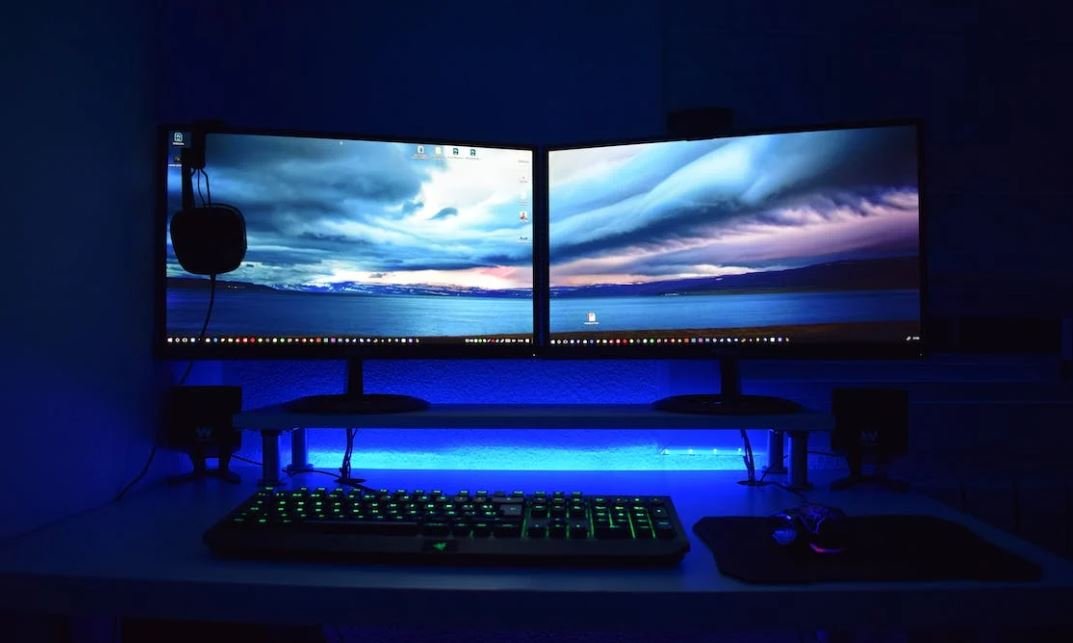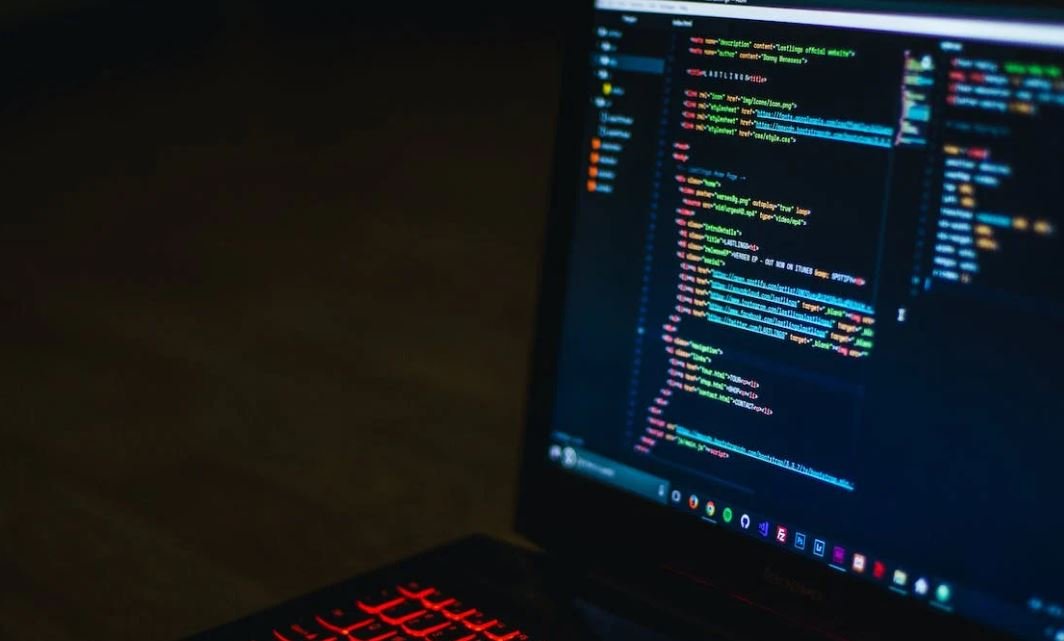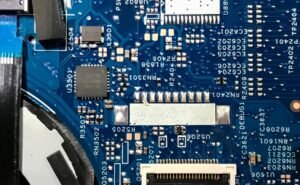Deepfake Detection Challenge
The Deepfake Detection Challenge is a global competition that aims to develop effective techniques for identifying and combating deepfake videos. Deepfakes refer to manipulated videos or audios that appear genuine but are actually created using artificial intelligence techniques, making it increasingly difficult for humans to differentiate between real and fake content.
Key Takeaways:
- Deepfake Detection Challenge is a global competition focused on combating deepfake videos.
- Deepfakes are manipulated videos or audios created using artificial intelligence.
- Identifying deepfake content is essential for maintaining trust in digital media.
**Deepfake technology has become a growing concern, as it has the potential to mislead and manipulate viewers.** The increased accessibility of sophisticated tools and algorithms for creating deepfakes has raised the need for reliable detection methods. The Deepfake Detection Challenge, initiated by Facebook, Microsoft, the Partnership on AI, and other organizations, invites researchers and experts from around the world to develop innovative solutions to detect and mitigate the impact of deepfakes.
The objective of the challenge is to encourage collaboration and knowledge sharing among participants to collectively build a robust defense against deepfakes. The organizers provide participants with a dataset containing a diverse range of deepfake videos, allowing them to train their algorithms and models. This dataset is accompanied by guidelines for evaluating the performance of detection techniques.
The Importance of Deepfake Detection
Detecting and identifying deepfake content is crucial in order to preserve the integrity of digital media. The proliferation of deepfakes can lead to serious consequences, including the spread of misinformation, public distrust in media, and potential damage to reputation and privacy. By developing effective detection methods, we can minimize the impact of maliciously created deepfakes and maintain trust in the authenticity of online media.
Challenges in Deepfake Detection
**Detecting deepfakes is a complex task due to the advancement of AI algorithms used to create them**. Deepfake videos are generated using deep learning techniques, which enable the AI model to learn and replicate characteristics from real videos. This results in convincing videos that are difficult to distinguish from genuine recordings. Additionally, as deepfake technology continues to evolve, detection methods need to constantly adapt to new techniques and variations in order to remain effective.
Data and Methodology
The Deepfake Detection Challenge provides participants with a dataset for training and evaluating their detection systems. This dataset consists of thousands of videos, including both real and deepfake videos, covering various subjects, actors, and scenarios. The challenge assesses the performance of the detection systems based on metrics such as accuracy and speed of detection.
| Dataset characteristics | Training Set | Validation Set | Test Set |
|---|---|---|---|
| Number of videos | 10,000 | 2,500 | 5,000 |
| Categories | Various | Various | Various |
| Deepfake percentage | 40% | 40% | 50% |
Participants can employ a variety of techniques including image forensics, facial and body movements analysis, and AI-based deepfake detection models to identify and flag deepfake videos. The challenge evaluates the models’ performance and ranks the participants based on their detection accuracy.
| Scoring Criteria | Weightage (%) |
|---|---|
| Accuracy | 40 |
| Speed | 30 |
| Resource Usage | 20 |
| False Positive Rate | 10 |
Joining the Deepfake Detection Challenge
The Deepfake Detection Challenge is open to researchers, developers, and experts in the field of AI and deepfake detection. **By participating in the challenge, you have the opportunity to contribute to the ongoing fight against deepfake technology**. Through collaboration and knowledge sharing, we can collectively develop effective detection techniques and mitigate the impact of deepfakes.
Whether you are an individual or part of a team, you can register for the challenge on the official website. Join the community of experts and work towards building a more trustworthy digital media landscape.
Remember, staying vigilant against deepfakes is essential in order to protect our society from the consequences of misinformation and manipulation.

Common Misconceptions
Paragraph 1
One common misconception surrounding the Deepfake Detection Challenge is that deepfake technology is easily detectable by the naked eye. However, this is not true as deepfakes are becoming increasingly realistic and difficult to distinguish from real content.
- Deepfakes can imitate facial expressions, voice patterns, and mannerisms, making them hard to spot without advanced detection methods.
- Deepfake creators use sophisticated machine learning algorithms that continually improve, making it even more challenging to detect their creations.
- In some cases, even experts struggle to differentiate deepfakes from authentic videos, emphasizing the need for robust detection systems.
Paragraph 2
Another misconception is that deepfake technology is primarily used for political propaganda and manipulating elections. While this is a concerning aspect of deepfakes, it is essential to recognize that the impact of deepfakes extends beyond politics.
- Deepfakes can be used for entertainment purposes, such as creating celebrity face swaps or altering videos in movies and TV shows.
- They can also be used in fraudulent activities, like impersonating individuals for financial scams or identity theft.
- Deepfakes have the potential to harm innocent individuals by tarnishing their reputation or manipulating their image without consent.
Paragraph 3
Many people assume that only experts in artificial intelligence and machine learning can contribute to the Deepfake Detection Challenge. While expertise in these fields is valuable, it is not the sole requirement for participation.
- The challenge encourages collaboration between professionals from various disciplines, including computer vision, data analysis, and cybersecurity.
- Individuals with expertise in image and video analysis, pattern recognition, and data manipulation are also essential in developing effective deepfake detection algorithms.
- Non-technical professionals, such as ethicists or policymakers, can contribute by evaluating the social and ethical implications of deepfake technology.
Paragraph 4
One misconception is that deepfake detection is a solved problem, and there is no need for further research or development. However, the reality is that deepfake technology is evolving rapidly, requiring continuous improvements in detection methods.
- As deepfakes become more sophisticated, new and more advanced detection techniques need to be developed to keep pace.
- Deepfake creators are also actively attempting to evade detection by developing countermeasures against existing methods, necessitating ongoing research and innovation.
- The Deepfake Detection Challenge aims to foster innovation by encouraging the development of novel algorithms and technologies that can better detect deepfakes.
Paragraph 5
Some people believe that deepfake technology will eventually render all video and audio evidence unreliable, making it impossible to discern truth from falsity. Although the threat posed by deepfakes is significant, it is crucial to highlight that detection methods can continually improve to combat this problem.
- Advancements in deepfake detection technologies can enable reliable identification and authentication of videos and audio recordings.
- Collaboration between researchers, organizations, and technological experts can help develop robust tools to combat deepfakes.
- While deepfake detection may pose challenges, it is crucial in avoiding the erosion of trust in visual and auditory evidence in the digital age.

Introduction
Deepfake technology has become increasingly sophisticated, raising concerns about its potential misuse. In response, the Deepfake Detection Challenge was initiated to develop effective methods to identify and combat deepfakes. This article explores various aspects of this challenge through a series of engaging tables.
The Science Behind Deepfakes
Understanding the technical aspects of deepfakes is crucial for combating their proliferation. The first table highlights key components of deepfake generation.
Deepfake Detection Techniques
Detecting deepfakes requires innovative approaches and cutting-edge algorithms. The next table illustrates various methods employed in the Deepfake Detection Challenge.
Accuracy of Deepfake Detection
Accurately identifying deepfakes is of paramount importance to safeguarding individuals and institutions. The following table showcases the precision and recall values achieved by the top-performing detection models.
Computational Resources Required
The detection of deepfakes often necessitates significant computational resources. The subsequent table highlights the average processing time required to analyze a single deepfake video.
Training Datasets
A robust training dataset ensures the effectiveness of deepfake detection models. The next table presents information on the composition of the training sets used in the challenge.
Real-Time Deepfake Detection
Real-time detection capabilities play a vital role in preventing the dissemination of malicious deepfakes. In the following table, we explore the frame processing speed achieved by different detection methods.
Challenges Encountered
Developing efficient deepfake detection techniques was not without its hurdles. The subsequent table examines some of the main challenges faced during the Deepfake Detection Challenge.
Deepfake Detection Competition Results
Competitions like the Deepfake Detection Challenge bring forth incredible breakthroughs. The following table showcases the top-performing models and their respective accuracy rates.
Ethical Considerations
While deepfake detection is crucial, ethical considerations must be taken into account. The last table presents the potential impact of false positives and false negatives in detection algorithms.
Conclusion
As deepfake technology advances rapidly, so too must our ability to detect and mitigate its potential harm. The Deepfake Detection Challenge has shown that innovative techniques and collaboration can lead to promising results. By continuing to refine detection methods and emphasizing ethical practices, we can better protect individuals and society at large from the dangers of fabricated media.
Frequently Asked Questions
Deepfake Detection Challenge
Questions:
- What is the Deepfake Detection Challenge?
- Who can participate in the Deepfake Detection Challenge?
- How do I participate in the Deepfake Detection Challenge?
- What are the evaluation criteria for the Deepfake Detection Challenge?
- What resources are available for participants in the Deepfake Detection Challenge?
- Are there any prizes for winners of the Deepfake Detection Challenge?
- Can I use pre-trained models or open-source libraries for the Deepfake Detection Challenge?
- Will I retain ownership of my solution developed for the Deepfake Detection Challenge?
- Can I collaborate with other participants in the Deepfake Detection Challenge?
- Is previous experience in deepfake detection necessary to participate in the Deepfake Detection Challenge?
Answers:
What is the Deepfake Detection Challenge?
The Deepfake Detection Challenge is a competition organized by Kaggle and Google to develop innovative solutions for detecting deepfake videos, which are artificially manipulated videos created using deep learning techniques. The challenge aims to advance the development of tools and algorithms to identify deepfake videos accurately.
Who can participate in the Deepfake Detection Challenge?
Anyone with an interest in machine learning and computer vision can participate in the Deepfake Detection Challenge. Whether you are a student, researcher, or industry professional, you are welcome to join the competition and contribute your expertise to tackle the deepfake detection problem.
How do I participate in the Deepfake Detection Challenge?
To participate in the Deepfake Detection Challenge, you need to visit the Kaggle platform and register for an account. Once registered, you can access the challenge page, review the competition details, download the dataset, and submit your solution for evaluation. Make sure to follow the competition guidelines and deadlines provided on the Kaggle website.
What are the evaluation criteria for the Deepfake Detection Challenge?
The Deepfake Detection Challenge submissions are evaluated based on their effectiveness in detecting deepfake videos. The competition organizers provide a labeled dataset for training and a separate unlabeled dataset for testing. Solutions are ranked using a metric called the Area Under the Receiver Operating Characteristic Curve (AU-ROC). The higher the AU-ROC score, the better the deepfake detection performance.
What resources are available for participants in the Deepfake Detection Challenge?
Participants in the Deepfake Detection Challenge have access to a labeled training dataset provided by the competition organizers. Additionally, Kaggle offers a platform where participants can discuss and collaborate with other competitors, access forums for guidance, and share ideas and insights. The competition’s webpage also provides resources such as tutorials, documentation, and sample code to support participants in developing their deepfake detection solutions.
Are there any prizes for winners of the Deepfake Detection Challenge?
Yes, there are prizes for the winners of the Deepfake Detection Challenge. The competition offers a total prize pool of $1 million, which is distributed among the top-performing participants. The specific prize distribution scheme and details can be found on the competition page on the Kaggle website.
Can I use pre-trained models or open-source libraries for the Deepfake Detection Challenge?
Yes, participants can use pre-trained models or open-source libraries in the Deepfake Detection Challenge. However, it is essential to comply with the competition rules and guidelines, which may impose certain restrictions on the use of external resources. Make sure to thoroughly review the competition guidelines to ensure compliance with the requirements.
Will I retain ownership of my solution developed for the Deepfake Detection Challenge?
Yes, participants retain ownership of the solutions they develop for the Deepfake Detection Challenge. By submitting a solution, participants grant Kaggle and Google a license to use and evaluate their submissions for the purposes of the competition. However, the intellectual property rights of the developed solutions remain with the participants.
Can I collaborate with other participants in the Deepfake Detection Challenge?
Yes, participants can collaborate with other participants in the Deepfake Detection Challenge. Kaggle provides a platform for participants to discuss, form teams, and collaborate with others. Collaboration can enhance the learning experience, foster innovation, and potentially lead to more effective deepfake detection solutions. However, make sure to review the competition rules to understand any restrictions or limitations on collaboration.
Is previous experience in deepfake detection necessary to participate in the Deepfake Detection Challenge?
Previous experience in deepfake detection is not necessary to participate in the Deepfake Detection Challenge. The competition welcomes participants from various backgrounds, including beginners. It provides resources, tutorials, and datasets to help participants get started and learn about deepfake detection. The challenge is an opportunity to learn and apply machine learning techniques in a practical and impactful context.




